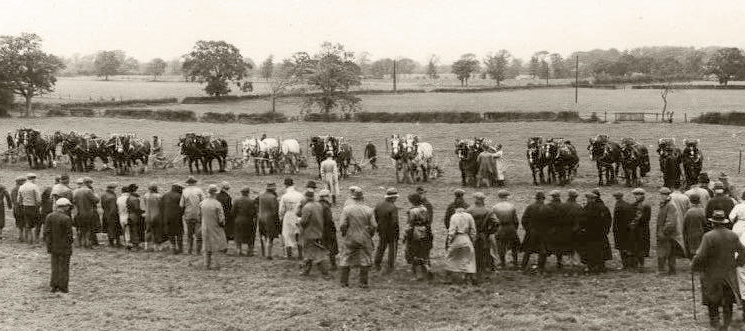A Short History of Court Gardens Farm
Court Gardens Farm is known to have existed as a farm since Saxon times. Originally known as the Manor of Ditchling Garden it was given by William de Warren, 1st Earl of Surrey (who fought alongside William the Conqueror at Hastings), to the newly established Priory at Lewes. After Henry VIII dissolved the monasteries, Lewes Priory and all its lands were given to Anne of Cleeves and on her death the land reverted to the Crown.
Queen Elizabeth I gave the land to Viscount Gage. The Gage family did not retain the land for very long before selling it on. However, the short period the land was Crown property was enough to change the name to Court Gardens Farm. The farm appears on one of the earliest detailed maps of Sussex, Yeakell and Gardner's map of 1778-1783, just to the north of Ditchling.
In the intervening 200 plus years not much has changed in the landscape, or indeed to the layout and boundaries of the fields.

The picture above was published in the Sussex Daily News recording a Ploughing Match held in one of our fields, known as Show Field as it was also the venue for the Ditchling Horse Show, on October 9th 1935. The field has not changed that much and several of the trees are still recognisable today. The Photo was kindly given to us by the late Bill Howe of Sheffield Park who was in attendance that day.
We bought the farm in 1996, and arrived with 650 breeding ewes. Initially lambs were sold to UK supermarkets and subsequently to an abattoir in Lamberhurst who supplied French supermarkets. Like true farmers we grumbled about the prices achieved and the penalties given for anything other than the leanest of lambs, but it was a viable enterprise.
All that came to an abrupt end with the foot and mouth crisis in 2001, apart from the burden of severe movement restrictions, we had to succumb to much lower prices, which put the viability of the farm in question.
The idea of selling lamb direct to the consumer was explored, and we converted a former workshop into a small butchery area complete with cold room. Initially we opened only on Fridays and Saturday mornings, selling just lamb and pumpkins and squashes that we had grown on the farm. Low key advertising in the form of local leaflet drops produced a few customers, we also approached restaurants in the vicinity who became keen supporters of local produce.
During the next year we began buying vegetables from two local organic growers, then followed improvements to the shop and conversion of the adjacent workshop to a larger butchery with a new larger cold room. This then allowed us to sell Pork and Beef from local farmers, together with Chicken and Eggs.
But in January 2011, we had to decide where best our efforts should be focused, and we decided that while the shop had been a success, and we'd met many many interesting people as well as winning a number of awards in local and national sausage competitions, we felt that the vineyard had to be our priority, and it was with a heavy heart that we decided to close. As it happened the market for lamb had greatly improved, bolstered by an export market again so that the viability of sheep farming had greatly improved.